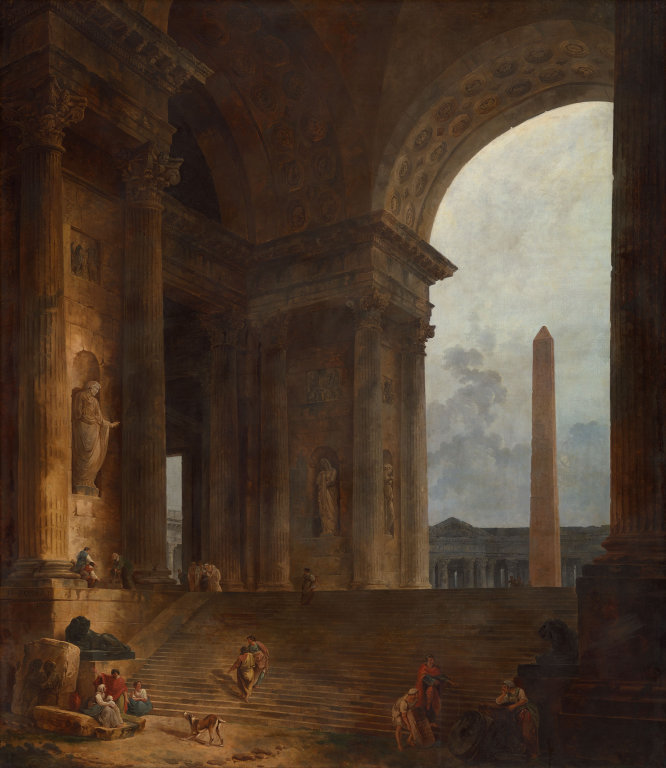The Obelisk (1783)
The Obelisk, painted in 1787-88,is one of four paintings intended to hang in the petit salon at the Château de Méréville.1 Drawing inspiration from classical Roman architecture, The Obelisk is exemplar of the artist’s mature work in capricci. Painted from the perspective of the interior of a grand hall, Robert locates an obelisk in the distance. Robert, having spent many years in Italy, would have been exposed to many obelisks among other classical architecture. Here, he draws upon his knowledge with the structure and inserts it into an imagined locale. The location of the obelisk is not named or distinguished by any one particular structure. Additional columns can be in the distance behind the obelisk. Though the painting is named for the obelisk, the immediate focus of the painting is placed on the juxtaposition of the size of the human figures and the enormous interior of the temple. Hollowed and spacious, the coffered ceilings of the arched entryway emphasize grandeur and regality. Massive columns establish stability and height. Marble statues are placed high along the walls and loom over the miniature human figures dressed in classical attire. The loftiness and monumentality of the towering ruins overwhelm the trivial presence humans take up. The Obelisk not only shows commonly seen tropes in classical antiquity, but also demonstrates Robert’s sophisticated creativity and skill in depicting fictional spaces.
KC
______________________________________________________________________________
1 Bandiera, John D. “Form and Meaning in Hubert Robert’s Ruin Caprices: Four Paintings of Fictive Ruins for the Chateau de Mereville.” Art Institute of Chicago Museum Studies 15, no.1 (1989), 22.
